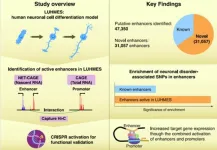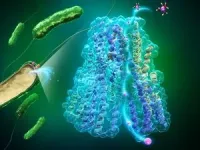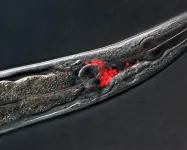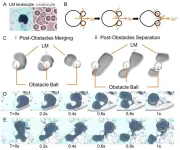Uncovering novel transcriptional enhancers in neuronal development and neuropsychiatric disorders
Researchers identify novel transcriptional enhancers regulating gene expression during neuronal differentiation
2025-02-13
(Press-News.org)
Neuropsychiatric disorders are becoming increasingly prevalent. Given their complex and multifactorial pathogenesis, there is an urgent need for effective and targeted therapies that can improve patients’ quality of life. Genome-wide association studies (GWASs) have identified various genetic alterations that contribute to the development and progression of neuropsychiatric disorders, ranging from mild dyslexia to more severe conditions such as schizophrenia.
While thousands of single nucleotide polymorphisms (SNPs)—changes in a single nucleotide position in the DNA—have been associated with neurological disorders, the majority are located in non-coding regions of the genome. Although these non-coding regions do not encode proteins, they contain regulatory elements such as enhancer sequences, which play crucial roles in controlling gene expression. Enhancers can regulate gene activity over long distances and are often specific to cell types and developmental stages. Despite their importance, enhancers remain poorly characterized, and their precise functions in neurological development and disease are not yet fully understood.
In a new study, Associate Professor Masahito Yoshihara from the Institute for Advanced Academic Research and Graduate School of Medicine at Chiba University, along with Professor Juha Kere and Dr. Peter Swoboda from the Department of Medicine Huddinge (MedH) at Karolinska Institutet, Sweden, and Dr. Pelin Sahlén from KTH – Royal Institute of Technology, Sweden, aimed to bridge this knowledge gap. They conducted a series of advanced analyses to identify and characterize enhancers involved in neuronal differentiation using LUHMES cells, a cell line derived from human fetal mesencephalic dopaminergic neurons.
Giving further insight into their work, soon to be published in EMBO Reports, Dr. Yoshihara, the main author of the study, says, “Elucidating how disease-associated variants influence gene regulation can uncover previously unidentified molecular pathways involved in neuronal disorders and reveal novel therapeutic targets for drug development.”
The researchers used LUHMES neuronal precursor cells, which can differentiate into functional neurons with a high transcriptional similarity to human brain-derived neurons. They employed Cap Analysis of Gene Expression (CAGE) and Native Elongating Transcript (NET)-CAGE to identify and quantify the activity of promoters and enhancers at a genome-wide level. These techniques were combined with targeted chromosome conformation capture (Capture Hi-C/HiCap), an advanced sequencing method that links distant enhancers to their target genes. They also examined the associations between putative enhancers and GWAS-identified loci implicated in neuronal disorders. The analysis identified 47,350 active putative enhancers, 65.6% of which were novel, and demonstrated an enrichment of SNPs associated with Parkinson’s disease, schizophrenia, bipolar disorder, and major depressive disorder within these enhancers.
Finally, they conducted in vitro assays in cultured cells to functionally validate promoter-enhancer interactions. Using the CRISPR-Cas9 system for genome editing, they activated enhancers and promoters of genes involved in neuronal differentiation and disorders. Consistent with their analysis, enhancer activation led to significant increases in the expression levels of the target genes.
Overall, these findings shed light on novel enhancer-promoter interactions and variants located within enhancer sequences, with potential pathogenic implications. These interactions and their target genes can further uncover novel druggable targets for the development of therapies against debilitating neuronal disorders.
Highlighting the clinical applications of their work, Dr. Yoshihara says, “Our study further exemplifies the power of enhancer discovery in providing potential clues to better understand the pathogenesis of neuropsychiatric disorders. Our results highlight the vast regulatory potential embedded in non-coding regions that harbor relevant enhancers and provide a valuable resource for future studies on neuronal development, regulation, and disorders.”
This study represents an important step toward uncovering novel gene regulatory mechanisms involved in neuronal development and disease, paving the way for the discovery of new therapeutic strategies for debilitating neuropsychiatric conditions.
About Associate Professor Masahito Yoshihara
Dr. Masahito Yoshihara, Associate Professor at the Institute for Advanced Academic Research and the Graduate School of Medicine, Chiba University, focuses on identifying diagnostic markers and therapeutic targets through multi-omics integration, including transcriptome and proteome analyses from patient samples. He also investigates gene regulatory mechanisms during cellular differentiation using advanced in vitro models derived from stem and progenitor cells. His research aims to enhance our understanding of disease pathogenesis while improving methodologies for stem cell reprogramming and differentiation. These efforts pave the way for innovative approaches in regenerative medicine and the development of targeted therapies.
END
[Attachments] See images for this press release:


ELSE PRESS RELEASES FROM THIS DATE:
2025-02-13
A team of researchers from the Sant Pau Research Institute (IR Sant Pau) has published a study in the Journal of Neuroinflammation that, for the first time, examines in depth the role of the peripheral immune system in amyotrophic lateral sclerosis (ALS) at the single-cell level. Their findings suggest that immune system cells—particularly two subpopulations of Natural Killer (NK) cells—may play a crucial part in the development and progression of this neurodegenerative disease.
ALS is a condition that causes the progressive degeneration of motor neurones, leading to a loss of muscle function and, eventually, affecting ...
2025-02-13
A UCLA Health research team has identified changes in brain rhythms that indicate seizure activity in Alzheimer’s patients.
The findings, published in Brain Communications, build on UCLA neurologist and senior author Dr. Keith Vossel’s pioneering work that first linked silent epileptic activity to cognitive decline in Alzheimer’s disease.
Vossel’s previous studies showed that silent seizures, detected through overnight electroencephalography (EEG) and one-hour magnetoencephalography (MEG), occur in more than 40% of Alzheimer’s patients—beyond the 20% who experience overt seizures. His research has demonstrated ...
2025-02-13
Hydrogels are polymeric materials with three-dimensional network structures containing large amounts of water. They serve as sustained-release drug delivery systems as they can encapsulate various bioactive substances, including drugs, antigens, and even cells. Hydrogels are better drug delivery alternatives than conventional systems, as they are more biocompatible, biodegradable, and easily administered as an injectable scaffold.
DNA has gained significant attention as a promising hydrogel material thanks to its customizable physicochemical properties, leading to the development of various DNA ...
2025-02-13
Paramedics in England are experiencing wide-ranging challenges in responding to the increasing number of end-of-life care patients they are being called out to, according to a study from the University of Southampton.
The study published in BMC Palliative Care highlights the issues paramedics face when responding to patients at end-of-life, including a lack of patient information, barriers to administering medication, and insufficient training.
It was funded by Marie Curie and supported by National Institute for Health and Care Research (NIHR) Applied ...
2025-02-13
A study of nematodes by researchers at Nagoya University in Japan has found that aging-related decline in brain function is caused by the excessive activation of certain neurons over time, rather than a decline in neuronal activity. This finding, published in the journal Proceedings of the National Academy of Sciences, suggests that interventions aimed at reducing neuronal hyperactivation, such as dietary changes, could potentially mitigate age-related cognitive decline.
Proper brain function occurs when a large number of neurons are connected to each other and work ...
2025-02-13
Osaka, Japan – From disaster zones to extreme environments, there remain areas difficult for even humans to reliably access. This poses a problem for search-and-rescue operations, research, surveillance, and more. Now, however, a research team from Osaka University and Diponegoro University, Indonesia is hard at work on one potential solution: the cyborg insect.
Cyborg insects have a lot of advantages over traditional robots. Power consumption is less of an issue, so it’s easier to miniaturize them, and they are even ‘pre-built’ in a sense. However, research on cyborg insects has been limited to simple environments, like flat surfaces supplemented ...
2025-02-13
New research from the University of Sydney has found people tend to discriminate in favour of individuals who show a similarity to them, even when the similarity arises from a random event like the flip of a coin.
Published in Proceedings of the National Academy of Sciences, the research runs counter to traditional theories, in particular social identity theory, that assume discrimination occurs because we divide people into groups. It finds, instead, differences between individuals are enough to trigger discrimination.
Previous research (using the seminal ‘minimal group’ experiment) showed participants tend to financially benefit members of their own group over ...
2025-02-13
As solar energy plays an increasing role in the global power supply, ensuring accurate forecasts of photovoltaic (PV) power generation is critical for balancing energy demand and supply. A new study published in Advances in Atmospheric Sciences explores how machine learning and statistical techniques can refine these forecasts by correcting errors in weather models.
Weather forecasts are a key input for PV power prediction models, yet they often contain systematic errors that impact accuracy. Researchers from the Institute of Statistics at the Karlsruhe Institute of Technology ...
2025-02-13
Scientists led by Prof. LIU Jing from the Technical Institute of Physics and Chemistry of the Chinese Academy of Sciences (CAS) have created a leukocyte-like liquid metallic entity that vividly simulates various leukocyte behaviors in nature.
Published in Matter on February 10, the researchers demonstrated how these "liquid metallic leukocytes" can autonomously perform complex actions like engulfing foreign substances, changing shape, moving in a pulsatile manner, and even climbing against gravity—showing striking similarities to the dynamic behavior of living cells.
The research ...
2025-02-13
RICHLAND, Wash.—Curled up inside every single one of the trillions of cells in the human body is six feet of DNA, spooled tightly and carrying the genetic instructions that govern so much of who a person becomes. It’s a nicely wrapped package of instructions for a lifetime.
But having the package in hand is a far cry from understanding how it’s executed.
It’s been 20 years since scientists completed the Human Genome Project, sequencing the entire length of DNA found in a person. Scientists have now done the same with an amazing array of organisms, including some types of worms, mice, mosquitoes, fruit flies, trees, rice and pufferfish.
Science ...
LAST 30 PRESS RELEASES:
[Press-News.org] Uncovering novel transcriptional enhancers in neuronal development and neuropsychiatric disorders
Researchers identify novel transcriptional enhancers regulating gene expression during neuronal differentiation








